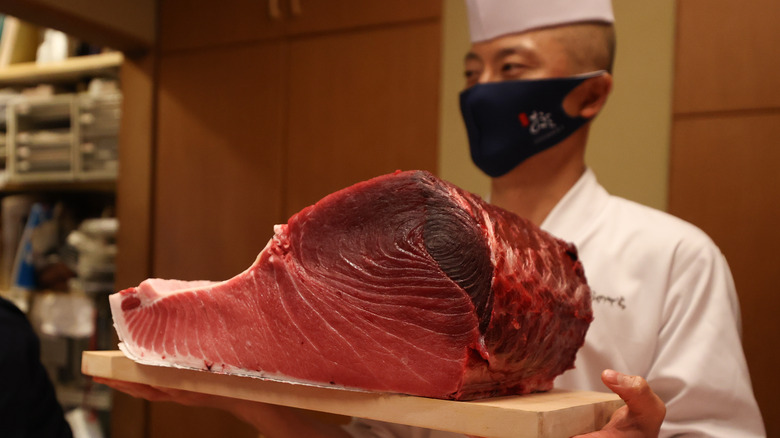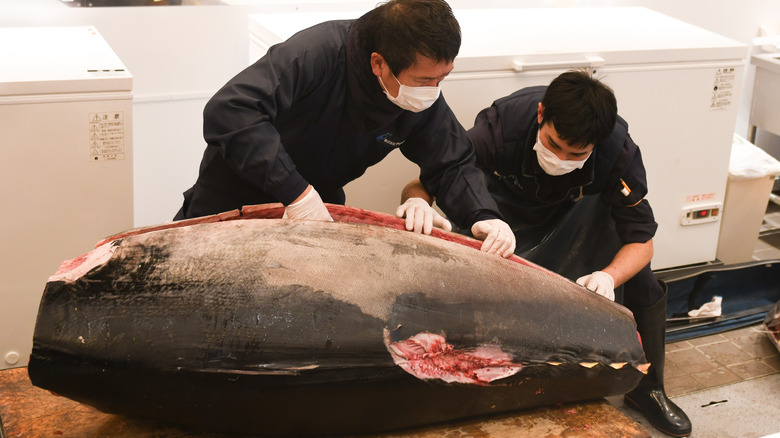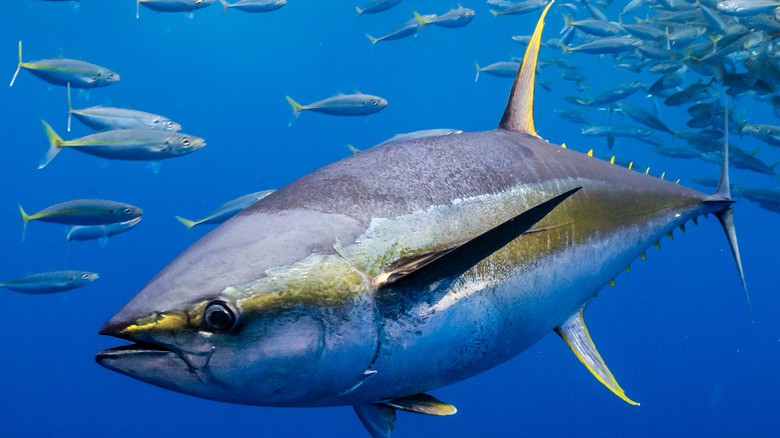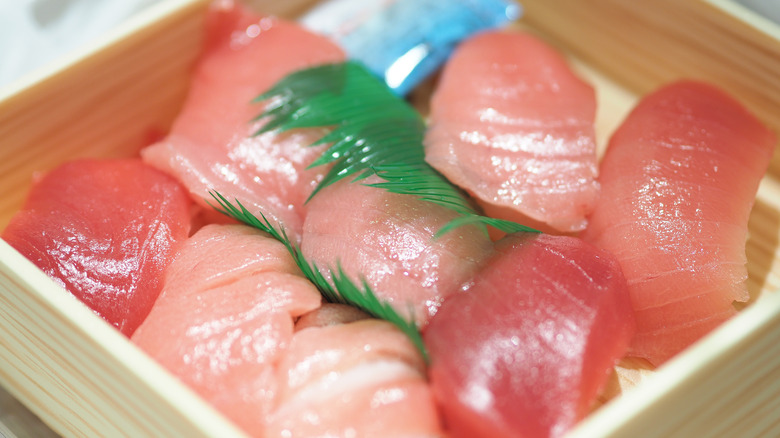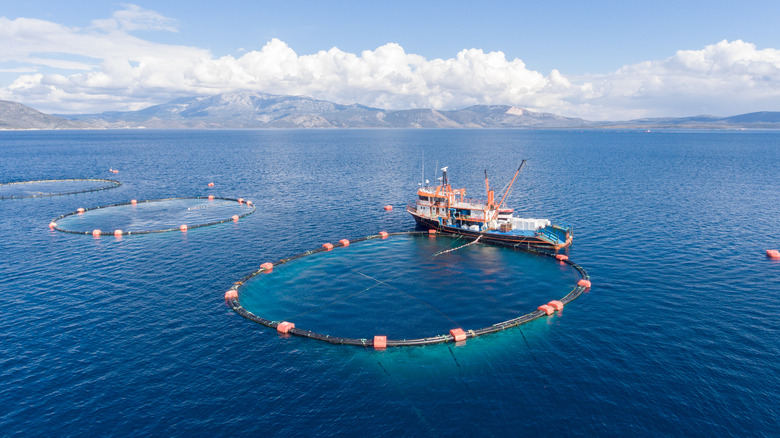The Difference Between Farmed And Wild Tuna
For sushi lovers everywhere, tuna is a crown jewel of flavor, texture, and presentation capable of headlining a variety of dishes each more delicious than the last. A fish whose red, white, and pink meat is as prized as rubies and diamonds, the many types of tuna used in sushi and other dishes are heavily sought after the world over. But as the costs and benefits of fishing and farming on industries and on the environment become more apparent many scientists and fishermen find themselves at a confusing crossroads.
According to Food Republic, there are quite a few different types of tuna that are sought after by chefs, each with different life cycles. The going for tuna farming is slow and careful work, per NPR, but there are efforts being made all around the world to try and control the tuna and seize the means of production. For all this effort though, how does farmed tuna compare to the true blue fished wild tuna that has the world so enthralled?
The differences in weight and in price
Of the many types of tuna that can be caught in the wild, only bluefin has been successfully farmed, with experimental efforts for yellowfin tuna underway, per Atuna. According to Fine Dining Lovers, in an interview with Chef-Owner Tomoo Kimura of Sushi Kimura, wild bluefin tuna approach a weight of 50kg in about three years. In that same span of time farmed tuna will grow to be about 70kg. Farmed tuna are fattened using special feed and are thus a good deal larger than wild tuna of the same age, as this increase in weight profits the farmers.
Because of the difficulty in catching wild bluefin, and also because of the superiority of the meat, wild bluefin will cost two or three times that of farmed tuna. The demand for authentic wild bluefin tuna is high and, when coupled with a low supply, prices will skyrocket over the less desired and highly supplied farmed tuna.
Seasonality of the tuna and general availability
Tuna as a species have extremely varied habitats and can be found in all the world's oceans, per Britannica. This means that they can be caught virtually everywhere, all one needs is the proper equipment and expertise. Farmed tuna, because they have to be kept under specific conditions and must be closely monitored, cannot be found in quite as many places as their wilder counterparts. Atuna lists only very specific locations where tuna farms can function, these include the Mediterranean Sea particularly by Spain and Malta, Southwestern regions of the Pacific Ocean by Japan and Australia, and Eastern regions of the Pacific Ocean by Mexico.
The times at which tuna can be farmed or caught are also very different. Chef Kimura states that certain time cycles revolving around the wild tunas' feeding patterns and mating behavior will yield fattier and/or better tasting flesh, so most of the fishing of wild tuna happens around specific times. There is quite a bit of variability in these fishing times, factors like specific fish type and diet matter greatly. Farmed tuna on the other hand have no seasonality variation due to their strictly controlled environment, thus the very best of the farmed tuna is available all year long.
Flavor is the final word
All of these facts are interesting and important, but usually the decision between farmed and fished just comes down to the quality of each product. Flavor is king. Chef Kimura tells Fine Dining Lovers that farmed tuna has an overly rich taste compared to wild tuna, stating that it's overly fishy with little umami and the quality of the fat on the meat is looser. Wild tuna, on the other hand, Chef Kimura says is fuller in its umami and has a more balanced and refined fat content. He attributes these differences to the diet of the fish. In farms the tuna are fed fats and proteins to increase their weight gain, while in the wild tuna eat squid and other fish resulting in different flavor profiles.
To sushi chefs that have worked tirelessly to refine their craft and their palates these traits may be obvious even at the glance before the mouthful but Chef Yamada Kenshi of Noshi Sushi tells the LA Times that besides the added fat content people generally actually cannot tell which sushi is made from farmed tuna and which is made from wild tuna. Which begs the question, which should you be eating and why does it matter?
Mother Nature's final final word
The great difference between wild and farmed tuna, besides the slight differences in taste, is the environmental impact that these two methods have. Fishing versus farming is an ongoing debate with arguments on both sides that can get heated, but as a general consensus everyone does agree that bluefin tuna are delicious and that their populations should be maintained.
Bluefin tuna, and all types of tuna in the oceans, are incredibly important to their ecosystems and any unnatural drop in their numbers could be devastating, per the LA Times. The dangers of overfishing and of less-than-environmentally-friendly fishing practices are serious concerns. According to NPR this has led to more attention being shown to the tuna farms to see if they can truly be sustainable.
On the other hand fishing practices have supposedly improved and the status of the bluefin tuna appears to be healthy. According to the National Oceanic and Atmospheric Administration (NOAA), US fished Atlantic bluefin tuna is a sustainable fish choice and NOAA confidently encourages people to buy and eat tuna. So, the choice is yours. Fish or farm?
